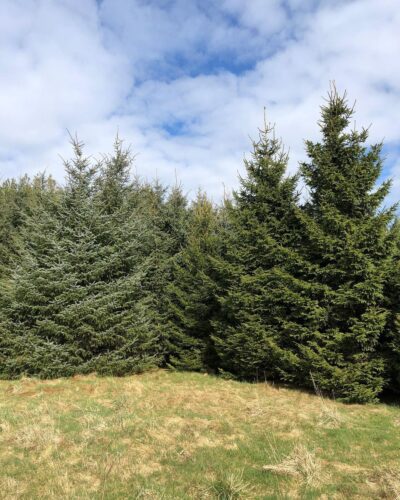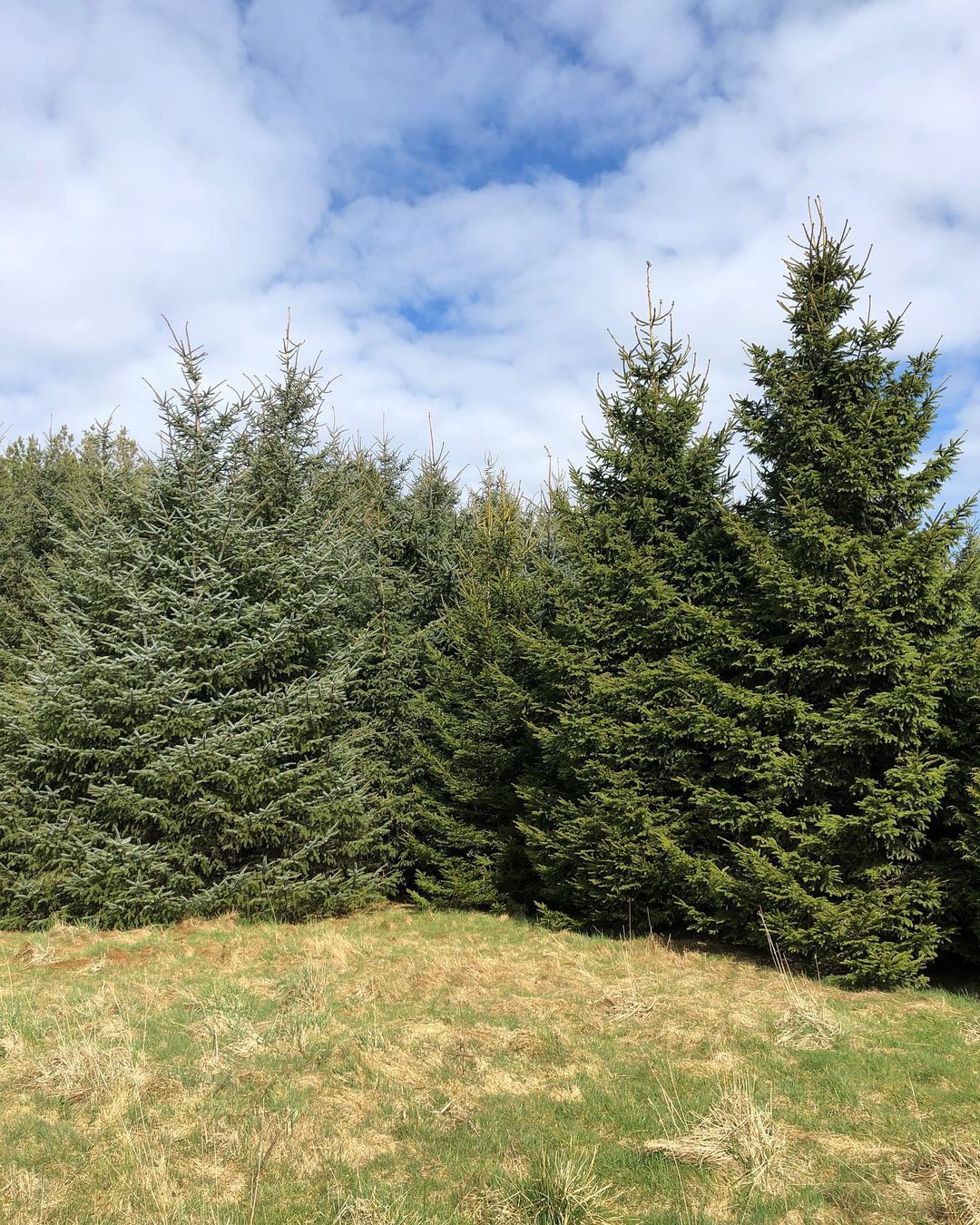Look at the list of Invasive Trees that You Should Avoid Planting in Your Yard, as they can create a mess in your landscape.
Trees bring nature into a backyard like nothing else. Trees come in different colors and textures. They attract wildlife, too. But not every tree is a good choice. Some trees can be invasive and harm the environment. They grow where they shouldn’t and crowd out native plants. While some of these invasive trees are popular, others causing similar problems often go overlooked. In this list, you will get detailed information about invasive trees that should never be planted in your yard.
Invasive Trees

1. Siberian Elm (Ulmus pumila)
This invasive tree, known as Ulmus pumila, can reach up to 70 feet (21 meters) in height. It produces green flowers that come before the leaves, small leaves, and round fruit with wings that hang in clusters. Siberian Elm grows rapidly, even in areas with low rainfall and poor soil, allowing it to take over disturbed prairies within a few years.
It has a high seed germination rate and is tough against Dutch elm disease. Identifying this tree can be hard because it can cross-pollinate with native elm trees.
2. Autumn Olive (Eleagus umbellata)
The Autumn Olive shrub brightens up the yard with its glossy red berries, which wildlife loves. It can grow up to 20 feet (6 meters) tall. Birds and mammals, attracted by the berries, eat them and spread the seeds everywhere, making them invasive. Autumn olive is a serious invader and is categorized as a severe threat by the Tennessee Exotic Pest Plant Council.
3. Tree-of-Heaven (Ailanthus altissima)
The tree-of-heaven was brought into the country in the 1780s to be used as a street tree because it grows quickly, reaching heights of 80 to 100 feet (24-30.5 meters). It can handle polluted air and soil and has spread across much of North America. Nowadays, it’s considered invasive in at least 30 states because it produces a lot of winged fruits, each containing a single seed that spreads easily. Additionally, the tree can grow back quickly from its roots even after being cut down.
4. Weeping Willow (Salix babylonica)
When grown near a pond or open landscape, weeping willows look appealing. The bright fall color looks beautiful in the right areas. Though away from large locations, they rapidly turn crowded.
This large tree favors moist to wet soil, making it a good choice for growing near water bodies. However, when grown near homes, they might damage water pipes and sewers. Also, with maturity, they turn weak and drop big branches.
5. Norway Spruce (Picea abies)
Native to central and northern Europe, this invasive tree is grown in landscapes across North America for many years. This fast-growing tree features manageable, large, deep green, dangling side branches.
Although they’re pretty trees that grow fast in colder areas, they spread seeds and have become a problem in some places in the northern U.S. and Canada.
6. Fruitless Mulberry (Morus alba)
Initially brought to the United States to support the silkworm industry, the fruitless white mulberry (Morus alba) found its niche as a favored shade tree for residential settings. Popular for its hardiness against cold temperatures and drought and its towering stature of up to 60 feet, it became a staple choice for both landscapers and homeowners. Additionally, there are compact weeping varieties of the fruitless mulberry, reaching around 20 feet in height, as shown here.
Although they offer an advantage over typical fruiting white mulberries by not producing fruit and serving as excellent shade trees, the advantages of fruitless mulberries are limited. Similar to all mulberry varieties, fruitless mulberries generate abundant pollen, shed their infertile flowers in large quantities, and can swiftly disrupt lawns and underground pipes for water. Furthermore, their extensive root systems can potentially harm nearby concrete and foundations.
Read: ‘Grey Owl’ Juniper Care and Growing Guide
7. Mimosa (Albizia julibizin)
Also known as the silk tree, it is originally from Asia but is now commonly found growing along highways, powerline rights-of-way, and forest edges. It was brought in as an ornamental plant, but it’s now considered a “Severe Threat” by the Tennessee Exotic Pest Plant Council. This plant, a member of the bean family, has big leaves and pink, thread-like flowers. It also produces lots of flat seed pods resembling beans that contain plenty of long-lasting seeds. Like other invasive plants, it grows back quickly when cut.
8. Black, White, and Green Ash (Fraxinus spp.)
Black, white, and green ash trees (Fraxinus spp.) grow fast with a nice rounded shape. The leaves turn yellow, red, or orange in the fall. Many were planted in the U.S. during the 1960s and 1970s because of these features and were said to be great for lining streets.
Sadly, when the emerald ash borer bug came from Asia, many cities had to chop down lots of dead ash trees. Even if you go with the costly treatments, the bugs usually kill the trees eventually.
9. Norway Maple (Acer platanoides)
The Norway maple tree is a good choice for shady areas. “Crimson King,” which has purple leaves, is popular among gardeners. In northeast areas, the shade resistance and wind-blown seeds made it an invasive species. It takes over native trees, such as sugar maple. Though you can pull seedlings from your hands and cut saplings, they come up again, so keeping an eye on them is essential.
10. Princess Tree (Paulownia tormentosa)
The Princess Tree is a beautiful tree with heart-shaped leaves and clusters of pink or lavender flowers that stand upright. During the fall, these pretty flowers release thousands of seeds from dry, brown capsules. These seeds sprout rapidly and can grow up to 15 feet (5 meters) in a year. Once it takes root, getting rid of it becomes quite challenging.
11. Paper Birch (Betula papyrifera)
Birch trees are pretty and often used in gardens because they have a charming rustic appearance. People like to plant them in groups of three or four. They grow across the United States, Hardiness Zones 2 to 7, which extends well beyond their native habitats in the northern regions.
Unfortunately, paper birch trees aren’t great for modern landscapes. Like other birches, they drop many leaves, branches, catkins, and seeds, which can make a mess, especially near pools or busy spots. These trees like cold weather, but people often plant them in hot, dry places where they don’t do well and might look unhealthy. Also, paper birches can get attacked by bugs called bronze birch borers, which tunnel through the tree and can eventually kill it.
12. Bradford Pear (Pyrus calleryana)
Bradford pear trees blossom in spring, marking the season in many places. Their beautiful white flowers are stunning, but lots of homeowners wish they hadn’t planted them. The flowers smell very sweet, which some people don’t like, and the trees are invasive. Also, the branches of these trees are weak and can easily break in storms.



